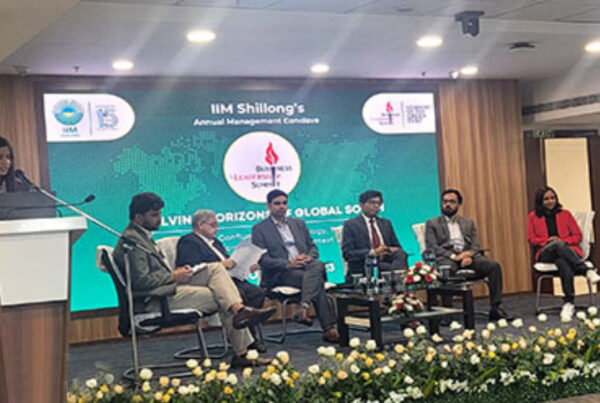Lastmile delivery services picked up significantly over the last few years, especially during the pandemic, and following the expansion of e-commerce, FMCG, retail, etc. The global lastmile delivery market is estimated to reach $300 billion by 2030.
While the surge in lastmile delivery is a positive sign for the economy, it is also a cause for concern, mainly on account of the environmental challenges. Delivery vehicles on roads increase traffic congestion, besides adding to carbon emission. Given that supply-chain emissions constitute the bulk of a company’s total emission levels and considering the significance of lastmile delivery in supply chain function, the pressure on companies to adopt more eco-friendly practices or environment-friendly delivery is increasing each year.
It is in this light that we assess the role of EVs and how they are revolutionizing lastmile logistics. The electrification of transport is beneficial in lowering air pollution, reducing dependence on oil imports, and in addressing climate change.
The growing preference of consumers for doorstep delivery is prompting many lastmile delivery service providers to focus on adding electric vehicles to their delivery fleet. This is a key factor revolutionizing electric mobility globally across markets, including in India.
With the price of fuel soaring and margins under pressure, EVs are emerging as a viable alternative. Using these vehicles in lastmile logistics lowers the total cost of operation. Plus, the cost of maintenance and servicing is low compared to that for vehicles powered by internal combustion engines. This is because EVs don’t have as many moving parts.
There are many alternate technologies from PHEV to AEV that are being tested in the market; however, it needs to be commercially viable to drive the demand at large scale. Currently, most of the countries are adopting Lithium-ion-based EV battery, considering their effectiveness and the productivity.
Variables in EVs
Taxation and other incentives: To promote greener modes of transportation, governments across the world are coming up with favorable policies and regulations supporting various stakeholders in the ecosystem, such as EV OEM, battery manufacturers, battery swapping companies, and end customers.
Globally, significant fiscal incentives have been offered to boost the adoption of EVs. Some key policies are the EU’s CO2 emissions regulation for cars and vans, the New Energy Vehicles mandate in China, and the Zero-Emission Vehicle mandate in California.
India, for instance, offers a range of subsidies, incentives, and tax benefits related to EVs under the production Linked Incentive (PLI) scheme and FAME II amendment. This is helping in two ways: one, last-mile delivery service providers are switching to EVs to avail of the benefits; and two, it is contributing to attracting more investments in the EV sector, thereby strengthening the manufacturing value chain.
Infrastructure: Logistics service providers are skeptical to adopt electric delivery vehicles due to the range anxiety associated with these vehicles. The infrastructure for EVsis far from adequate reflected in the unavailability of the chargers and the superchargers. Given the significance of vehicle uptime for logistics companies and the time taken for charging regular batteries, this is deterring companies from shifting to electricdelivery vehicles. Whilesolution from EV manufacturers, such as battery swapping and fast charging, have eased the discomfort a little, a lot remains to be done to drive EV adoption.
Raw materials: The manufacture of EVs depends on the supply of critical raw materials such as lithium, cobalt, and nickel. The supply chain of raw materials came under pressure during the pandemic as the demand for EVspicked up. The situation was exacerbated by geopolitical conflicts, namely the Russia-Ukraine war. Consequently, raw material prices have soared in recent months; the price of lithium, for instance, rose almostfive to six times in June 2022over that at the start of 2021.
Currently, the battery supply chain is highly concentrated in China. Europe and the US, on the other hand, play a very small role in the supply chain. This, therefore, indicates the need to diversify the supply chain base to mitigate any supply chain disruption as this would affect the uptake of electric delivery vehicles in the market.
Outlook
The overall outlook for the use of EVs in lastmile logistics appears bright. Globally, several factors are contributing to the success of EVs: growing consciousness among consumers, growing demand for online purchases, sustained support from governments, increasing initiatives by vehicle manufacturers to build environment-friendly fleets, and the growing need to switch from fossil fuels to renewable energy sources. Public spending on subsidies and incentives for EVs totaled USD30 billion in 2021. Furthermore, the number of new EV models rose five times from 2015 to 2021. Many countries have ambitious vehicle electrification targets for the next 7-8 years. Also, companies like Ikea, Amazon, and Unilever have set goals to phase out ICE vehicles gradually from their supply chain by replacing them with EVs. This will align with their internal ESG target to be a responsible company, thereby stimulating demand for EV for last mile logistics. This will have a cascading effect across markets and regions.
While the prospects are good for growth of EVs and lastmile delivery services, the challenges mentioned above need to be addressed for effective realization of goals related to sustainability. Only then we will be able to realize the benefits created using EVs in lastmile logistics.
For further insights on business and consumer research, connect with Bhasker Canagaradjou, Vice President at Avalon Global Research.




